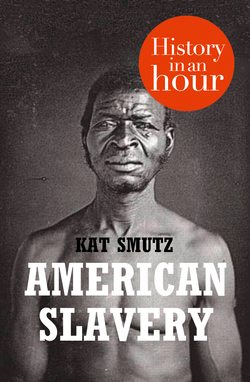Читать книгу American Slavery: History in an Hour - Kat Smutz, Kat Smutz - Страница 7
ОглавлениеThe Middle Passage – the Atlantic Slave Trade
In Africa, men, women and children were taken captive in battle or in raids by enemy tribesmen and marched to the west coast. It was only the first leg of what would be a long journey, a voyage that would end in a lifetime of slavery. In between was a crossing over the Atlantic Ocean known as the Middle Passage.
Spanish explorers were the first to bring Africans on their explorations to the New World – some as slaves, some as free men – and as colonization grew and as the Spanish began to establish plantations in the Caribbean, they would bring African slaves to the New World as permanent residents. In 1501, the first African slaves arrived in Santo Domingo in the Dominican Republic. The islands of the Caribbean were proving to be an excellent environment for the production of sugar cane and soon other European countries had established their own colonies.
Demand for labour to work the vast fields that rolled across the islands like a green continuation of the ocean itself grew, and African slaves seemed suited to the harsh labour. They worked in brutal conditions that included extreme heat, humidity, and were plagued by poisonous insects, venomous snakes, and tropical diseases. Compared to other races, the Africans seemed to have a higher tolerance for the extreme conditions in the sugar cane fields. That was the commonly accepted theory at the time. Whether fact or fiction, as African slavery moved from the Caribbean to the North American mainland, that mentality followed.
Once again, it was the Spanish who brought the first African slaves to North America, arriving in Saint Augustine in the Spanish colony of Florida. But it was not until 1619 that the first Africans arrived in the British colonies.
The Treasurer, an English ship, left Jamestown, Britain’s first successful attempt to establish a colony in the New World, to pick up goods for the colony. At some point on the high seas, the ship met a Dutch man-of-war, the White Lion, and the two sailed on together until they encountered a Spanish frigate loaded with slaves. No one knows how many slaves were on the Spanish ship, but the White Lion parted company with the Treasurer and appeared off the coast of Virginia carrying twenty out of the one hundred slaves that had been taken from the Spanish frigate. The captain reported that the other eighty had died. The twenty remaining African slaves on the White Lion were exchanged for provisions. Eventually, months later, the Treasurer reached Jamestown. Their slaves had been sold in Bermuda. The pirating of a Spanish ship had brought slavery to the British colonies in the New World. By 1649, the number of African slaves in the colony of Virginia was 300. By 1671, they numbered 2,000, comprising 5 per cent of the population.
As more people arrived, more land was cleared and cultivated, and agriculture grew in the New World. But so did the demand for labourers to keep it going. With the growing demand for labour, the slave trade became even more lucrative. From 1619 until 1808, when the importation of African slaves was banned in the British colonies, an estimated 450,000 Africans were imported as slaves.
In other parts of the New World, the numbers of imported Africans varied, but were still staggeringly high. Before 1880, Brazil had imported 4 million. In the West Indies, each of the European colonies established by France, Britain, Spain and the Dutch had imported more than 1.5 million African slaves each.
